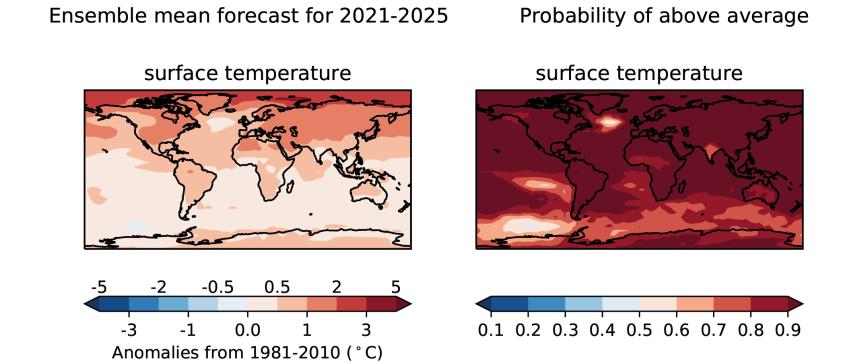Every day we make decisions on what to wear, how to travel, and what to do over the next few days based on weather forecasts.
On a larger scale, various actors, from farmers to hydropower providers, plan activities for the coming weeks, months, and even decades.
At the Bjerknes Climate Prediction Unit, the researchers are developing a cutting-edge numerical climate prediction system to deliver the climate intelligence that will be useful to such actors in their decision making and to sustainably develop.

Predicting the climate a decade in advance
The prediction system, the Norwegian climate prediction model, combines the Norwegian Earth system model with Ensemble Kalman filter data assimilation. The former accurately simulate climate and anthropogenically driven global warming. While the assimilation of ocean and sea ice data is used to synchronize the model with the observed shorter-term fluctuations in climate. Thus, the Bjerknes researchers can skilfully predict the climate out to a decade in advance.
"Our research would not be possible without the national high-performance computer resources provided by Sigma2. Our current annual resources requirements approach 100 million CPU hours and several hundred terabytes of storage."
Noel Sebastian Keenlyside, Professor at Bjerknes Climate Prediction Unit
The Norwegian climate prediction model is particularly skillful on multi-annual timescales in the North Atlantic to Arctic Sector. Paramount here is the transport of heat by the ocean to high latitudes and its influence on sea ice and the atmosphere. It gives rise to pronounced decadal shifts in climate in the region. The model is one of a few that is predicting a shift to cooler conditions in the North Atlantic that could temporarily offset the effects of global warming in our region and parts of the Arctic (see figure below).
IPCC climate report contribution
Bjerknes Climate Prediction unit`s numerical predictions are being used globally and locally. The climate researchers were part of the decadal climate prediction project that contributed data for the Intergovernmental Panel Climate Change (IPCC) Assessment Report Six. THey contribute quasi-operational forecasts to the World Meteorological Global Annual to Decadal Climate Update Reports. At the national level, thei climate predictions are available to more than 20 user partners from agriculture, renewable energy, shipping, and insurance sectors through Climate Futures—a recently funded centre for innovation-based research.

Bjerknes Climate Prediction Unit
The Bjerknes Climate Prediction Unit (Bjerknes CPU) bridges weather forecasting and long-term climate projections, achieving skillful predictions for Norwegian surface temperature and Arctic sea ice extent up to a decade ahead. The research consortium,explores Earth's climate system, involving researchers from four partner institutions:
- University of Bergen: Geophysical Institute, Department of Earth Science, and Department of Biological Sciences
- NORCE (Norwegian Research Centre)
- Nansen Environmental and Remote Sensing Center